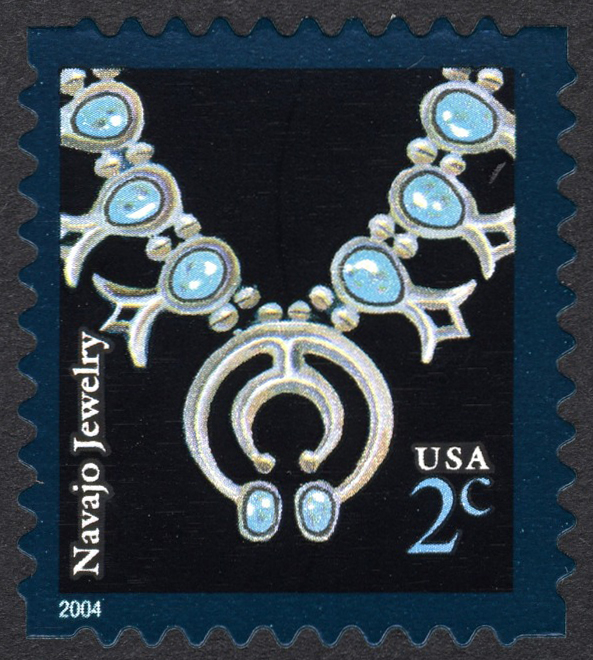
Early Navajo metal jewelry was composed of copper or brass. Silver ornaments were at first bought from Mexican smiths from whom the Navajo adapted the art of silversmithing somewhere between 1850 and 1870. Many pieces were made of both Mexican silver and melted coins.
The classic Navajo “squash blossom” necklace is typically composed of round silver beads of two hemispheres, ornamental beads resembling stylized blossoms, and a central pendant in the form of a crescent. The squash blossom motif is based on a stylized version of the pomegranate blossom. The Navajo name for this type of bead meant "round beads that spread out" as did their squash blossoms. The central “naja” crescent motif is seen in early Roman and Moorish design and later used as an amulet on Spanish colonial horse headband amulets said to ward off the evil eye. Around 1880, Navajo silversmiths began in-setting stones such as turquoise which they obtained in trade with the Zuni for silver. Artistic expression continues to flourish among Navajo silversmiths today, who use gold and a variety of semi-precious and precious stones to create traditional and contemporary designs.

Courtesy, Smithsonian National Museum of the American Indian, 24/0745.

Courtesty, Smithsonian National Museum of the American Indian, 24/3604.
